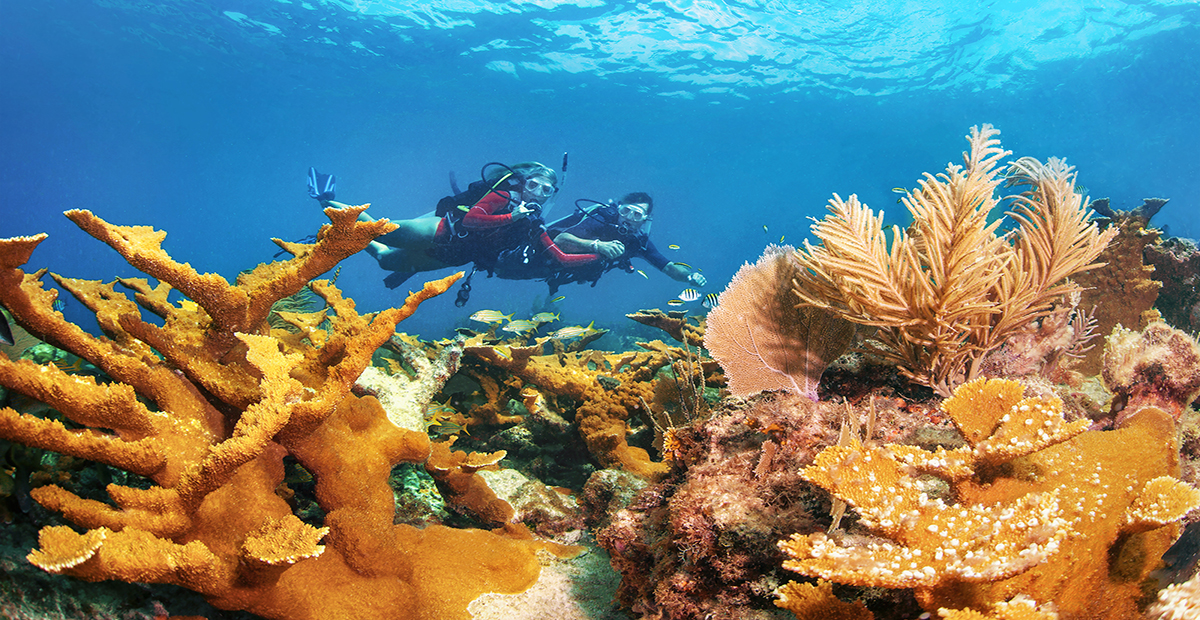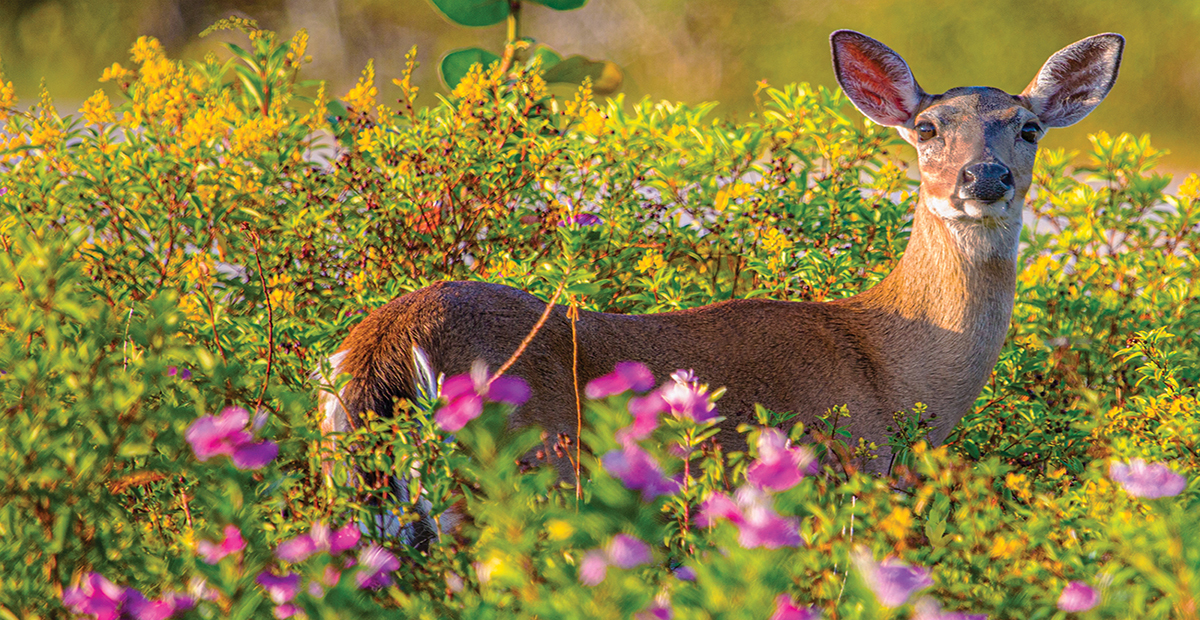You could say the Florida Keys are all about numbers: 800 keys stretching over 120 miles, 42 bridges connecting them all, including the Seven Mile Bridge, which spans 35,716 feet. Over 260 days of sunshine a year sparkle upon 2,900 nautical miles of protected waters, the southernmost being just 90 miles from Cuba.
But for those who travel to the Keys, there are only two numbers that really count: One and a million. After all, that’s the easiest way to describe the Florida Keys—a one-in-a-million destination.
Here, you can leave your passport at home and still soak up the Caribbean sun and culture. Hike through hardwood hammocks and botanical preserves, then cool off with a swim in tropical waters. Afterward, savor a slice of the area’s signature dessert—Key Lime pie. Or, visit the renowned Turtle Hospital to learn about the local ecosystem and conservation, celebrate art, music, wildlife, history, and literature at one of the dozens of festivals, or witness nature defy logic as you drive past “Fred,” the area’s quirkiest landmark: a salt-sprayed Australian pine tree growing out of a roadbed on the historic Old Seven Mile Bridge.
With so much to do and see, it’s little wonder the Florida Keys are the key to happiness.
Key Largo

The most accessible of the keys, Key Largo is home to John Pennekamp Coral Reef State Park, the first undersea park in the country. You’ll find a nine-foot-tall “Christ of the Abyss” statue submerged 25 feet below the water. Divers and snorkelers have the best view, but a glass-bottom catamaran experience is also an option. Above the surface, Everglades National Park, a World Heritage Site, begs exploration. The park’s pine flatwoods, coastal mangroves, and sawgrass marshes are home to hundreds of species.
Not to miss: A sundowner at Sundowners, one of the liveliest restaurants in Key Largo.
Islamorada

Islamorada is considered the sport fishing capital of the world. This collection of six islands is home to Long Key State Park, one of the state’s top locations for bird watching. The park also offers the longest hiking trail in the Keys—the Golden ORB nature trail—a 1.5-mile loop featuring several rare ecosystems. Walk until the trail meets the ocean; you’re almost there when the soil turns to sun-bleached coral.
Not to miss: The History of Diving Museum, featuring a collection of diving artifacts and memorabilia that took over 40 years to amass.
Marathon

This 10-mile-long island community is widely regarded as the jewel in a cruiser’s crown. Its marine-friendly cities offer 2,400-plus slips for passing cruisers. While sailing, fishing, snorkeling, diving, and stunning beaches are all top attractions, Marathon is home to Florida Keys Aquarium Encounters which can include getting into the tank with trained professionals for aquarium diving with coral reef dwellers, stingrays and much more.
Not to miss: The 90-minute guided tour of the Turtle Hospital, which gives visitors a behind-the-scenes look at the nonprofit organization dedicated to the research, rescue, rehab, and release of endangered sea turtles.
Big Pine & Florida’s Lower Keys

With names like Summerland, Cudjoe, Big Coppitt, and Sugarloaf, you might struggle to determine if you’re naming one of Florida’s Lower Keys or a tropical cocktail served in a coconut. This quiet region of islands, known for its indigenous wildlife, eclectic restaurants, and pristine beaches, is also home to an underwater music festival, complete with mermaids and mermen playing instruments like the “fluke-a-lele” and “trom-bonefish.” Held annually in July, this subaquatic concert takes place about six miles off the coast of Big Pine and raises money to preserve the coral reefs. Nearby Stock Island is part industrial shrimping village and part celebrity-approved emerging hot spot. Here, you’ll find the authentic charm of the area’s last working waterfronts and shipyards operating in harmony next to luxury resorts and golf clubs.
Not to miss: A trip to the National Key Deer Refuge on Big Pine. The endangered key deer range from 24-32 inches tall and are only found in the Lower Keys.
Key West

The southernmost point in the continental US, this “Floribbean” island is best known for its historical sites, conch-style architecture, and celebrated sunsets. Look for one of the six-toed cats at Earnest Hemingway’s house, a U.S. National Historic Landmark; peruse the art galleries, cafés, and shops along Duval Street; or check out the botanical and butterfly gardens. Beaches, light houses, and museums are never more than a short walk from wherever you are. For Instagrammable moments, rent a floating tiki bar or sign up for an LED night-kayaking tour.
Not to miss: Celebrate as the sun goes down at Mallory Square.

